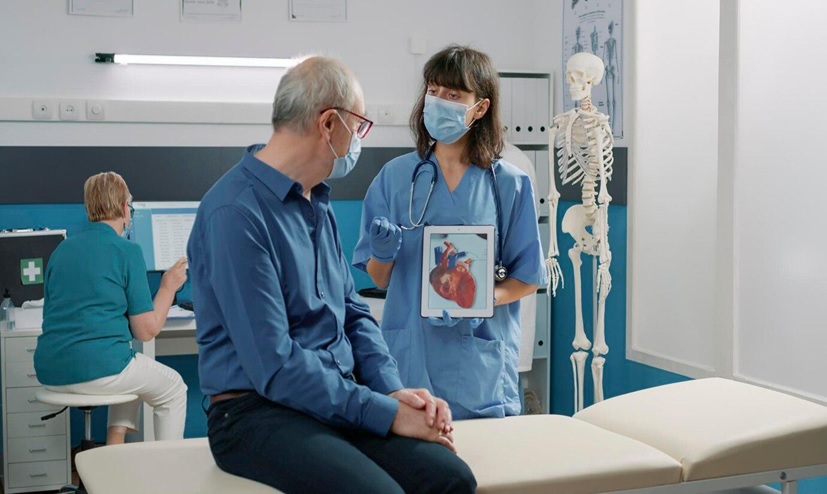Understanding Prevention Cardiology
Preventive cardiology focuses on identifying and reducing cardiovascular risks before they lead to serious health issues. This proactive approach emphasizes lifestyle changes, early detection, and timely intervention to minimize heart disease. Key strategies include assessing risk factors like genetics, lifestyle, and conditions such as hypertension or diabetes to develop personalized prevention plans.
Advancements in technology enhance early detection, with imaging techniques like CT scans and MRIs providing detailed cardiac insights. These non-invasive tools aid in identifying potential issues sooner, improving patient outcomes and quality of life.
The Role Of CT Scans In Heart Health
CT scans have transformed heart health assessment by providing detailed cross-sectional images of the heart and surrounding structures. They are particularly effective in detecting coronary artery disease by identifying calcium deposits, an early sign of atherosclerosis.
The major advantage of CT scans is their ability to quickly and accurately evaluate coronary arteries, aiding in early diagnosis and treatment for at-risk patients with conditions like high blood pressure, high cholesterol, or a family history of heart disease. This proactive approach helps prevent severe cardiovascular events such as heart attacks.
Additionally, CT scans are invaluable for assessing heart valves, the aorta, and detecting congenital defects or aneurysms. Their detailed imaging ensures early identification and treatment of potential issues, ultimately improving patient outcomes.
The Role Of MRI in Cardiovascular Assessment
MRI is another powerful tool in the realm of cardiovascular assessment. Unlike CT scans, which use X-rays, MRI employs magnetic fields and radio waves to generate detailed images of the heart. This technique is particularly effective in evaluating the heart’s structure, function, and blood flow, providing a wealth of information that is critical for accurate diagnosis and treatment planning
One of the primary applications of cardiac MRI is in assessing heart muscle diseases, such as cardiomyopathies. By offering detailed images of the heart muscle, MRI can detect abnormalities in its structure and function, allowing for early intervention and management. Additionally, MRI is instrumental in evaluating heart valve function, helping to identify conditions like stenosis or regurgitation.
MRI is also valuable in assessing congenital heart disease and complex cardiovascular conditions that require detailed anatomical information. Unlike other imaging techniques, MRI provides superior contrast resolution, making it easier to distinguish between different tissues and identify subtle abnormalities. This capability ensures that even the most challenging cases are accurately diagnosed and treated.
Early Detection Of Heart Issues: Importance And Benefits
Early detection of heart issues through cardiovascular imaging is crucial for preventing severe events and improving outcomes. It enables timely interventions to halt disease progression, reduce heart attack and stroke risk, and support lifestyle changes for better heart health.
Cardiovascular imaging provides detailed insights into heart structure and function, aiding accurate diagnoses and targeted treatments. Early detection also lowers healthcare costs by reducing the need for expensive treatments and hospitalizations. Overall, it is essential for effective cardiology prevention, offering significant health and financial benefits.
Advances In Imaging Technology For Cardiovascular Health
Recent advancements in cardiovascular imaging have greatly improved our ability to detect, diagnose, and treat heart disease with precision. High-resolution imaging techniques, particularly in CT and MRI, now offer exceptional clarity, enabling the visualization of even the smallest heart structures. This enhanced detail is essential for accurate diagnosis and personalized treatment plans.
Innovations have also focused on reducing radiation exposure during CT scans, with techniques like iterative reconstruction and dose modulation minimizing the radiation required, ensuring safer scans for patients. Similarly, advancements in MRI technology have led to faster scan times and improved image quality, enhancing both diagnostic accuracy and the overall patient experience.
Integrating CT & MRI Into Routine Cardiac Screening
Integrating CT and MRI into routine cardiac screening marks a significant shift in heart health management. These advanced imaging techniques enable early detection and proactive management of potential issues before they develop into serious conditions.
Routine screening with CT and MRI is especially beneficial for individuals with risk factors like a family history of heart disease, high cholesterol, or hypertension. Regular imaging allows for continuous monitoring, identifying changes in heart health early, and facilitating timely interventions to reduce the risk of severe cardiovascular events.
Furthermore, using CT and MRI in routine screening provides a comprehensive view of the heart’s structure and function. This detailed insight helps healthcare providers create personalized treatment plans, leading to better outcomes and improved overall heart health.
Future Trends In Prevention Cardiology Imaging
The future of prevention cardiology imaging is set for continued innovation, with emerging technologies poised to enhance how we detect and manage heart disease. One exciting advancement is the integration of artificial intelligence (AI) into cardiovascular imaging. AI algorithms can quickly and accurately analyze complex imaging data, identifying patterns and abnormalities that might be missed by humans. This could revolutionize early detection, leading to more precise and personalized treatment plans.
Another promising development is the exploration of hybrid imaging techniques, which combine the strengths of CT, MRI, and other modalities. These approaches offer a more comprehensive view of the heart, providing deeper insights into cardiovascular conditions. As these technologies advance, they will further improve our ability to prevent and manage heart disease.
Conclusion: The Importance Of Early Detection In Heart Health
In conclusion, the importance of early detection in heart health cannot be overstated. By identifying potential issues before they become severe, we can implement timely interventions that improve patient outcomes and enhance quality of life. Advanced imaging techniques, such as CT and MRI, play a pivotal role in this process, offering detailed insights into cardiovascular health.
As we continue to integrate these technologies into routine practice, we are better equipped to prevent heart disease and promote overall well-being. The future of preventive cardiology is bright, with ongoing advancements promising even greater precision and effectiveness. By embracing these innovations, we can continue to improve heart health for patients worldwide.


Comments are closed.